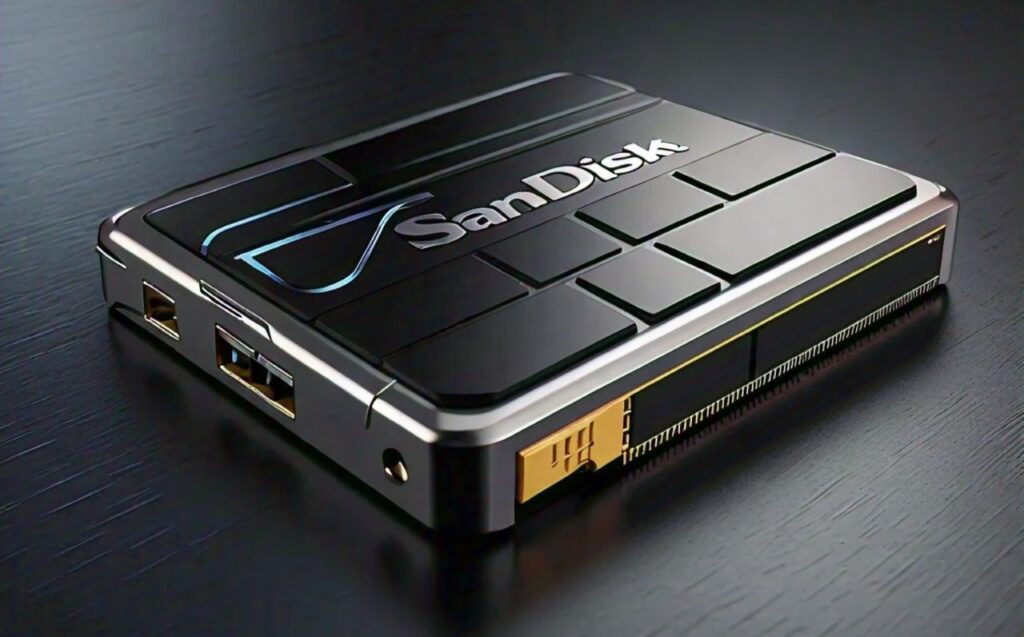Key Takeaways
SanDisk SSDs are highly regarded for their performance, durability, and affordability, making them a reliable choice for various use cases. Whether for gaming, content creation, or general use, SanDisk SSDs offer excellent value with robust data protection features.
In this article, we’ll explore the key features of SanDisk SSDs, their performance, durability, and value for money, helping you decide if they’re the right fit for your needs.

Speed and Efficiency
SanDisk SSDs feature advanced NAND technology, which enables swift boot times and rapid file transfers.
Models like the SanDisk Extreme Pro and SanDisk Ultra 3D boast sequential read speeds of up to 560MB/s, making them ideal for heavy workloads.
Performance for Everyday Tasks
For general users, SanDisk SSDs ensure smooth performance in tasks like web browsing, document editing, and media playback.
The low latency further enhances the overall user experience, even in budget-friendly options.
Durability and Reliability of SanDisk SSDs
Built for Longevity
SanDisk SSDs are engineered for durability, offering long life spans compared to traditional hard drives.
They incorporate advanced wear-leveling algorithms and error correction code (ECC) to reduce data degradation over time.
Shock and Vibration Resistance
Another key aspect of SanDisk SSDs is their resistance to physical damage.
Their solid-state design means they can withstand shocks, vibrations, and extreme temperatures, making them a durable choice for laptops and portable systems.
Warranty and Support
Most SanDisk SSDs come with a 3- to 5-year limited warranty, reflecting the brand’s confidence in its product reliability.
Value for Money: Are SanDisk SSDs Worth the Price?
SanDisk strikes a balance between cost and performance, appealing to budget-conscious users and professionals alike.
Price Comparisons
When compared to competitors like Samsung or Crucial, SanDisk SSDs often provide similar performance at slightly lower price points, especially in mid-range models.
Longevity and Cost Efficiency
Though initially priced higher than HDDs, the longevity and performance gains of SanDisk SSDs justify the investment.
For tasks requiring quick access to data, the cost-per-performance ratio is compelling.
Installation and Setup: How Easy is it to Use a SanDisk SSD?
User-Friendly Design
SanDisk SSDs are designed with convenience in mind. Most models come with a standard 2.5-inch form factor or M.2 interface, ensuring compatibility with a wide range of devices.
Setup Process
- Physical Installation: Installing a SanDisk SSD is straightforward, involving just a few screws and connectors.
- Software Tools: SanDisk provides free tools like the SanDisk SSD Dashboard, which simplifies firmware updates and drive monitoring.
- Cloning Software: For easy data migration, tools like Acronis True Image help replicate existing hard drives onto the SSD.
SanDisk SSDs for Gaming and Content Creation
Performance for Gamers
Gamers benefit significantly from SanDisk SSDs, as they reduce loading times and enhance overall system responsiveness.
High-speed models ensure smoother gameplay and quicker asset loading in open-world titles.
Content Creation
SanDisk SSDs excel in handling large media files, making them suitable for video editing, 3D rendering, and graphic design.
Their high read/write speeds minimize delays, ensuring efficient workflows for professionals.
Storage Capacities
SanDisk offers SSDs in capacities ranging from 256GB to 4TB, catering to varying storage requirements for gaming and creative projects.
How SanDisk SSDs Handle Data Security and Protection?
Built-In Security Features
SanDisk SSDs incorporate features like AES 256-bit encryption, ensuring that sensitive data remains secure.
These drives also support self-encrypting technology for enterprise users.
Data Recovery Options
To safeguard against accidental data loss, SanDisk provides tools and support for data recovery, helping users retrieve lost files with ease.
Firmware Updates
Regular firmware updates from SanDisk enhance security measures and maintain optimal performance over the life of the SSD.
FAQs
1. Are SanDisk SSDs compatible with all devices?
Yes, most SanDisk SSDs support standard interfaces like SATA and M.2, making them compatible with a wide range of laptops, desktops, and gaming consoles.
2. How do SanDisk SSDs compare to Samsung SSDs?
While Samsung SSDs often edge out in speed, SanDisk offers competitive performance at a more affordable price, making it a cost-effective alternative.
3. Do SanDisk SSDs support gaming?
Absolutely. SanDisk SSDs reduce game loading times and ensure a smoother gaming experience, even in resource-heavy titles.
4. What tools are available for managing SanDisk SSDs?
SanDisk provides the SSD Dashboard, a free tool for monitoring drive health, updating firmware, and optimizing performance.
5. Are SanDisk SSDs reliable for long-term use?
Yes, with advanced technologies like wear-leveling and ECC, SanDisk SSDs are designed for durability and long-term reliability.
Conclusion
SanDisk SSDs stand out as reliable, high-performance storage solutions suitable for a variety of needs.
Whether for everyday computing, gaming, or professional content creation, these drives deliver excellent speed, durability, and security features at competitive prices.
Their ease of installation and robust warranty further enhance their appeal, making them a strong contender in the SSD market.
Whether you’re upgrading an aging PC or building a new system, SanDisk SSDs are a worthwhile investment, balancing affordability with cutting-edge performance.

Leave a Reply